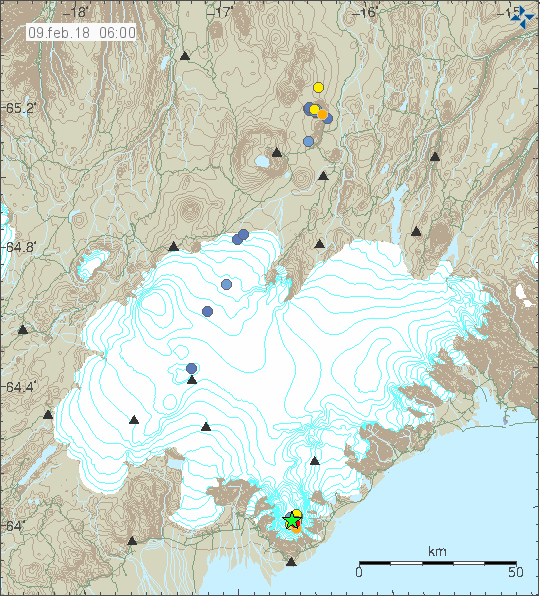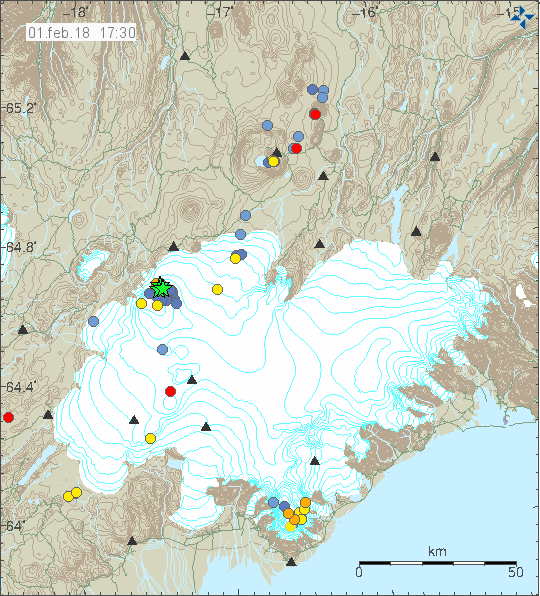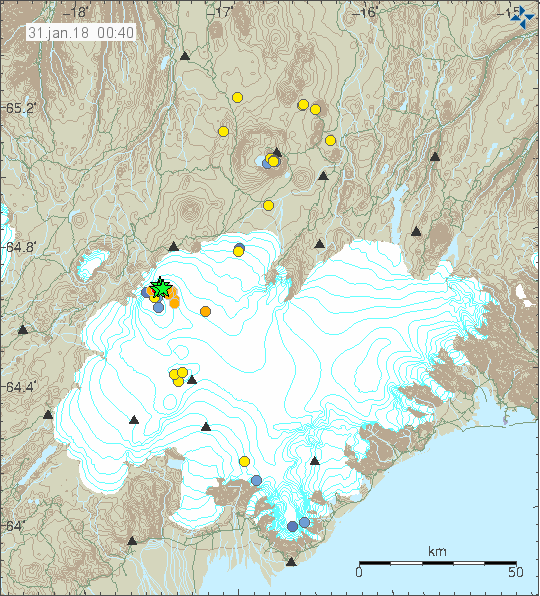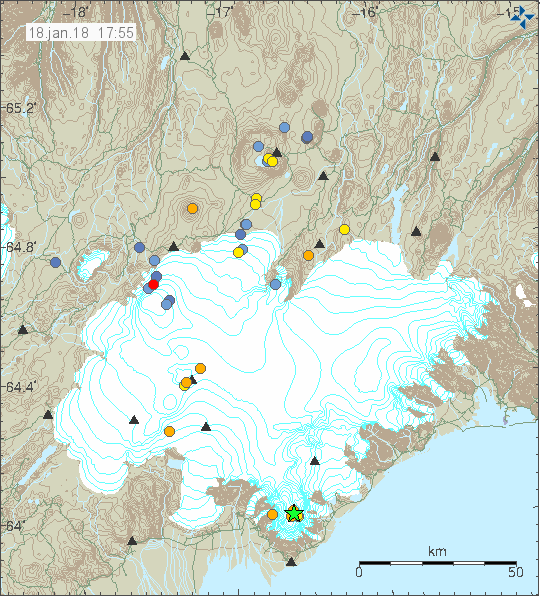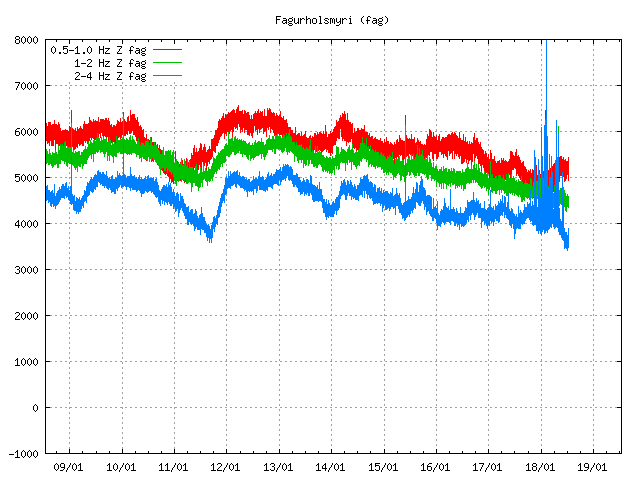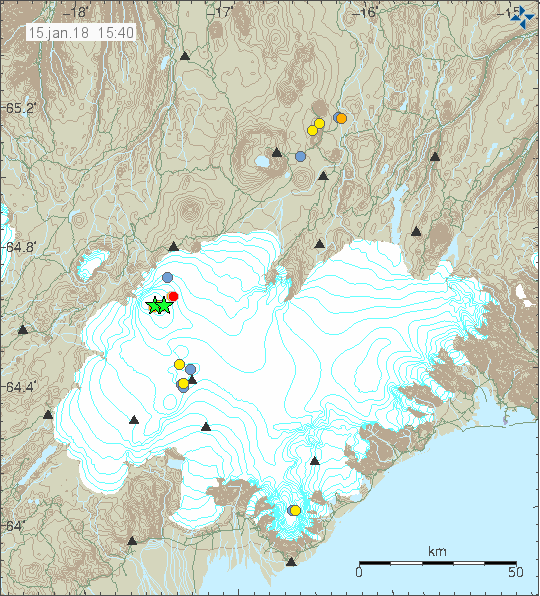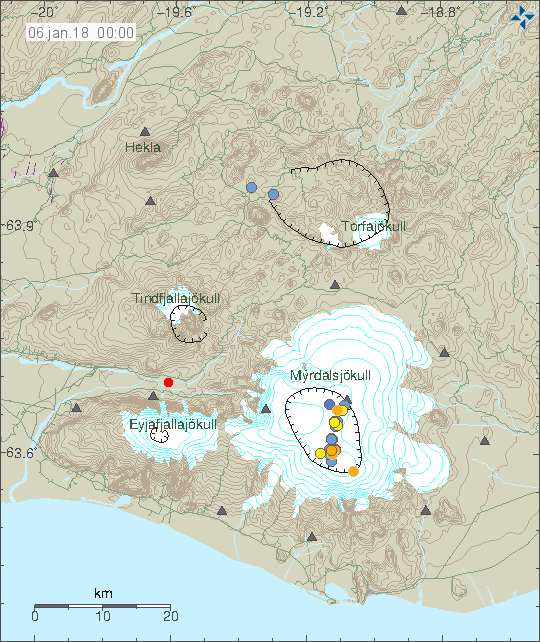Hydrothermal activity has formed a ice cave in Hofsjökull glacier (volcano details here). According to an announcement by Icelandic Met Office this ice cave is dangerous due to sulphur (SO2) pollution and that it goes above 60ppm. That can result in loss of breathing, loss of vision and damage to eyes and lungs. People should only enter this ice cave with gas monitoring hardware on them. One seven year old girl passed out due to sulphur poising some weeks ago in a trip to this newly formed ice cave. There is also a high risk of collapse from the roof of the ice cave as ice appears to be loose above it and can collapse down without warning at any time.
There is also a risk of hydrothermal activity increasing and that is going to result in more sulphur (SO2) gas in the cave and other dangerous gases coming up. This appears to the same location that had increased activity 15 years ago that also formed an ice cave. The reason for this increase in hydrothermal activity is unclear since no earthquake activity has been recorded in Hofsjökull volcano for the past 10 years. This means earthquake activity above background levels, one or three earthquakes are recorded each year in random part of the caldera or parts of Hofsjökull volcano outside of the caldera area. Höfsjökull volcano is on its own rifting zone (information here, related paper here) (marked as SRZ on some documents) along with Kerlingarfjöll volcano (it is now under GVP as Hreppar. I don’t know why that is).
Icelandic News
Veðurstofa varar við íshelli í Hofsjökli (Rúv.is, Picture, Icelandic)
Donations
Please see comment that I am going to leave on this subject.

